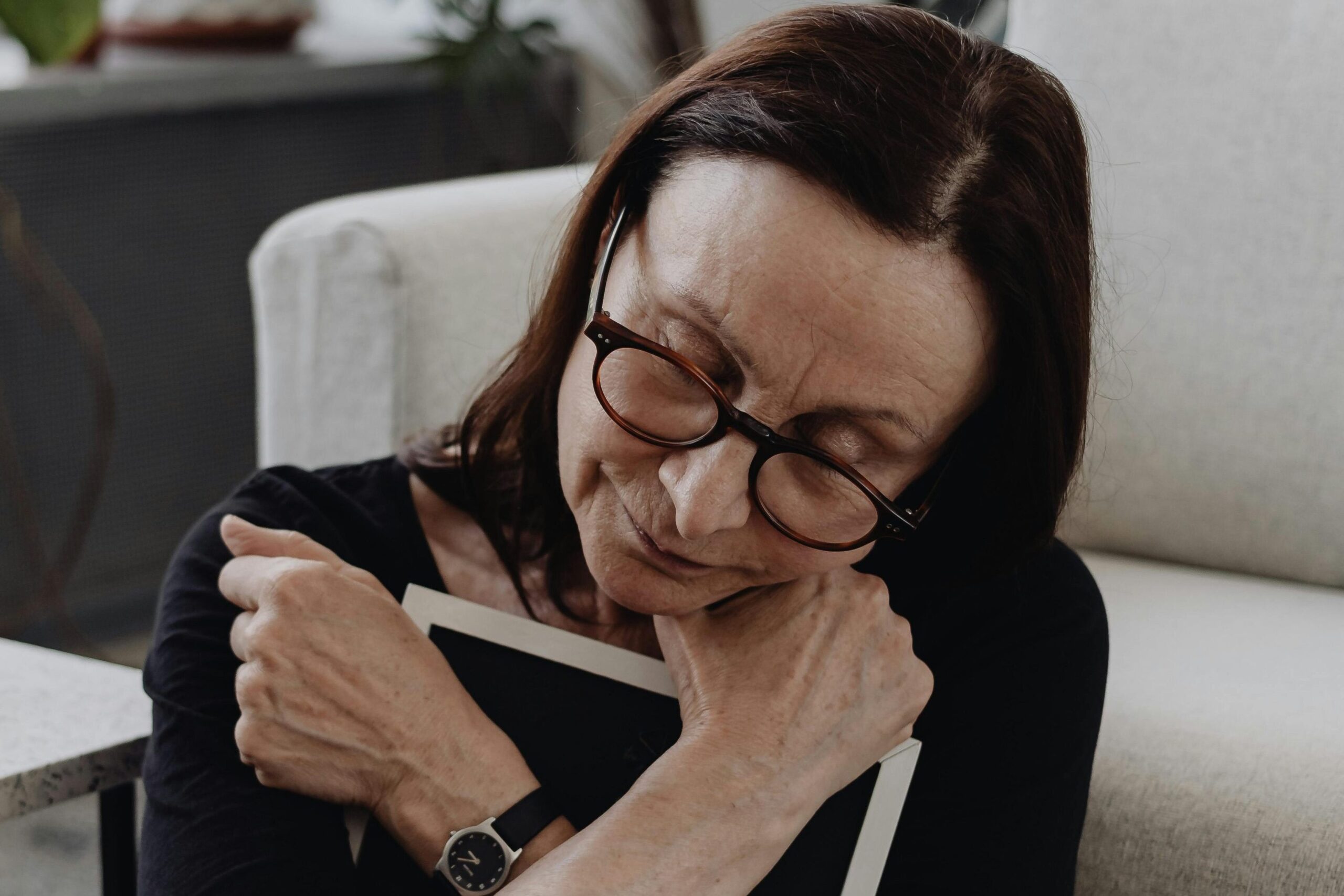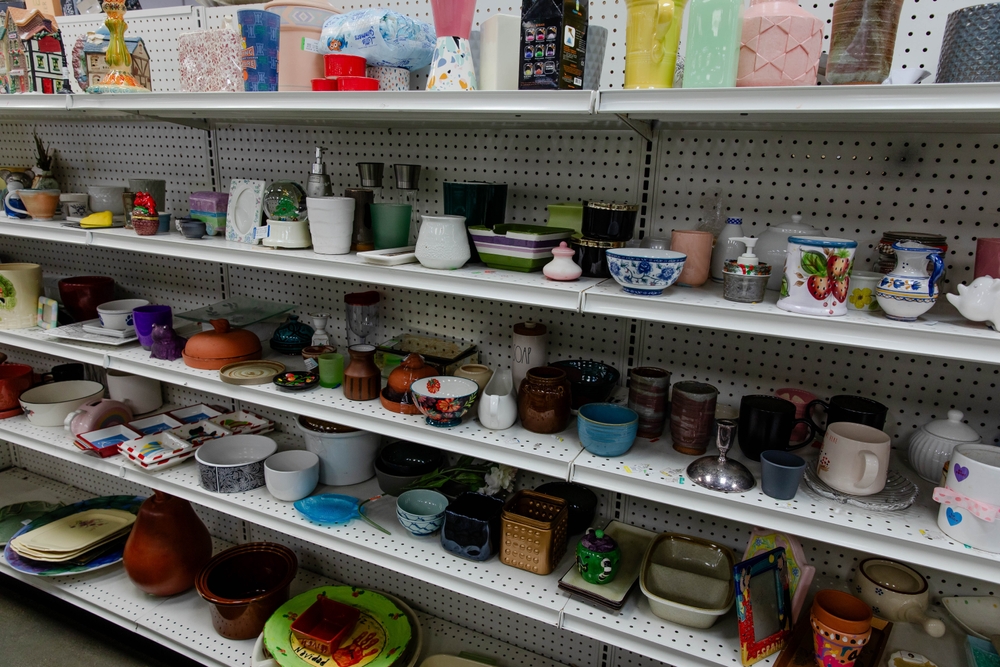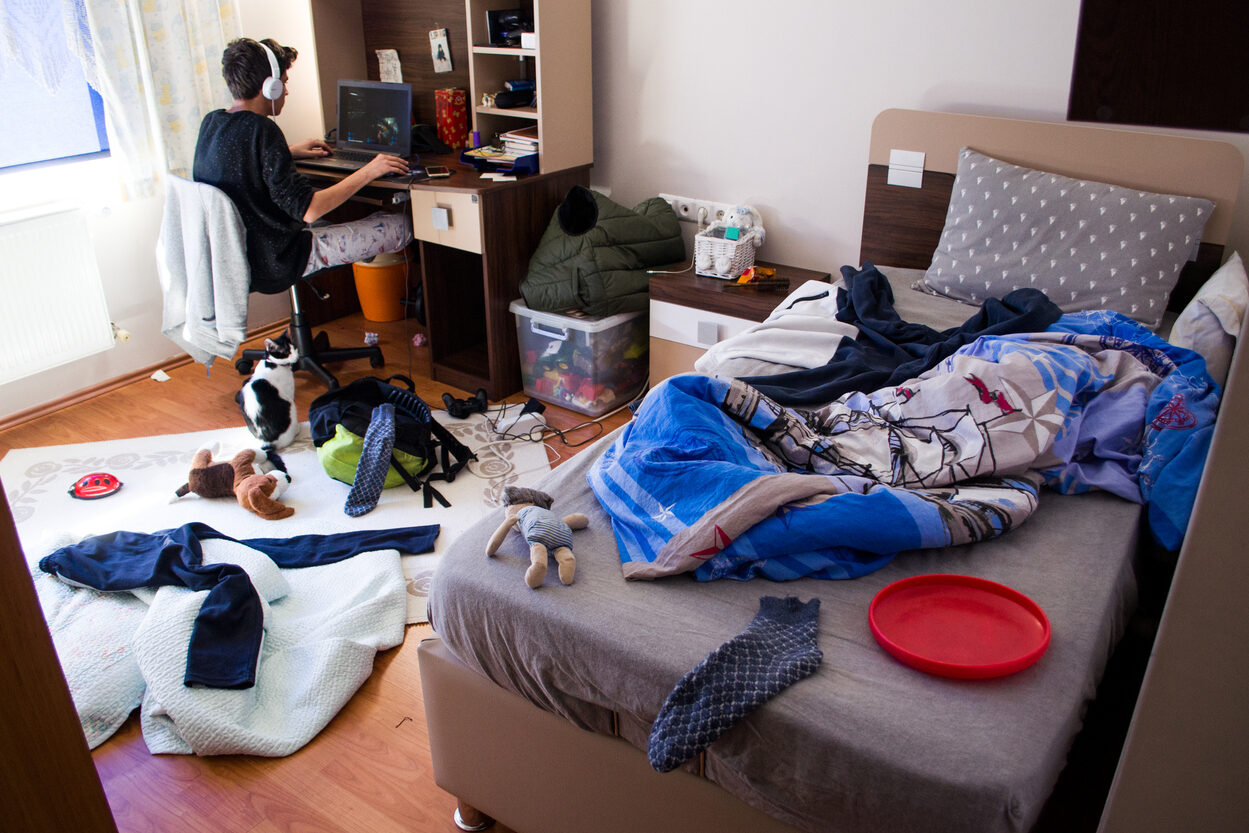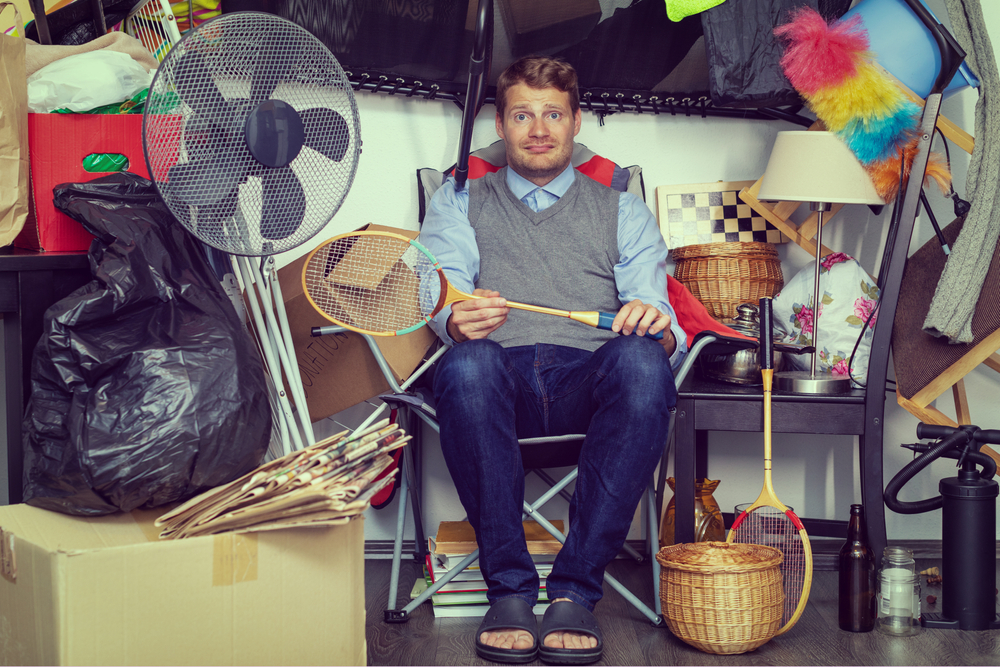1. Emotional Attachment: When Memories Become Clutter

Hoarding is often fueled by a profound emotional connection to objects. To some individuals, an old sweater, a broken chair, or a stack of outdated newspapers isn’t mere clutter; these items hold cherished memories. For instance, a family heirloom might represent love, identity, or ancestry, even if it’s worn beyond use. For many people, the things they hold onto aren’t just random possessions; they are reminders of the past, of people they’ve loved, of moments they don’t want to forget. That old sweater in the closet? It belonged to a late parent. The stacks of newspapers? They mark events that once felt important. Letting go isn’t as simple as throwing things away—it can feel like erasing a part of one’s history. And so, the clutter grows, not out of neglect or carelessness, but out of deep emotional attachment.
Sometimes, this attachment goes so far that objects become a surrogate for relationships or experiences lost. Parting with objects can trigger anxiety, grief, even guilt, as if throwing something away means betraying the past. Loved ones may not understand, urging the person to “just clean up,” not realizing how deeply personal the process is. But the truth is, holding onto everything doesn’t preserve the past—it can trap a person in it. Healing isn’t about forgetting; it’s about learning to separate memories from material things, to understand that love and history don’t live in objects, but in the mind and heart. Overcoming hoarding isn’t just about decluttering—it’s about finding peace with the past and making room for the future.
2. Fear of Scarcity: When Fear Turns Possessions into a Safety Net

Many hoarders are haunted by an intense fear of scarcity. This belief could stem from surviving poverty, a financial crisis, or environmental hardships. People who have experienced deprivation may hoard “just in case” they need items in the future. This is to let you know that hoarding isn’t always about sentimental attachment—sometimes, it’s rooted in a deep fear of not having enough. For those who have experienced scarcity, whether it was growing up in poverty, living through economic hardship, or even enduring a traumatic event like war or a natural disaster, the idea of “running out” can feel unbearable. The more they hold onto, the safer they feel, even if the excess makes daily life harder.
This fear isn’t just about physical deprivation but also encompasses emotional and psychological security. For many, their possessions represent a safety net, a tangible barrier against the uncertainties of the future. This mindset can be deeply ingrained, making it incredibly challenging to shift perspectives and recognize that letting go of excess items doesn’t equate to inviting disaster. The fear of not having enough becomes a self-fulfilling prophecy when important items get lost in the chaos or when living space becomes so crowded that it’s difficult to function. Breaking free from this cycle isn’t just about getting rid of excess possessions—it’s about addressing the deeper anxieties that drive the behavior.
3. Perfectionism: When “Just in Case” Becomes “Never Let Go”

For perfectionists, decision-making about possessions can become paralyzing. They fear making a “wrong” choice—what if they throw something away only to regret it later? This indecisiveness perpetuates a cycle of hoarding as they avoid these decisions altogether. Over time, the accumulating clutter becomes not only a representation of their indecision but also a magnifying source of their stress. Perfectionism and hoarding may seem like opposites—one is about order, the other about clutter—but in reality, they are deeply connected. For some, hoarding isn’t about sentimentality or fear of scarcity; it’s about control. They keep having thoughts such as, What if they throw something away and need it later? What if they donate an item, only to regret it?
But the irony is that hoarding due to perfectionism often leads to the very chaos perfectionists try to avoid. The more things pile up, the harder it becomes to find what’s truly important. Instead of a well-curated life, they end up with clutter that makes everyday tasks frustrating and exhausting. The idea of sorting through everything feels impossible—how can they make the “right” choices when there are so many? Perfectionism convinces them that if they just had more time, more energy, more certainty, they could finally get things in order. But that day never comes. Breaking free from this cycle isn’t about waiting for the perfect moment to declutter—it’s about accepting that perfection isn’t the goal.
4. Trauma and Loss

Traumatic events and significant losses often play key roles in hoarding. For some, collecting and retaining objects serves as a buffer against grief, emptiness, or pain. If someone lost a loved one, they might keep even the most trivial items belonging to that person, fearing that letting go means losing another piece of their connection. A loved one’s belongings, stacks of old letters, even seemingly insignificant items like receipts or clothing become symbols of what was lost. Letting go of these things can feel like losing that person all over again, like erasing the proof that they existed. The grief doesn’t just live in the heart—it spills into every room, every closet, every surface.
But while hoarding can feel like a way to hold onto love, it can also become a prison. The very objects meant to provide comfort can instead create isolation, turning homes into overwhelming spaces filled with sorrow rather than solace. Healing doesn’t mean forgetting—it means finding new ways to honor the past without being buried by it. It’s about realizing that memories aren’t stored in things; they live within us. True healing comes not from keeping every object, but from learning to carry love and memories without needing physical proof. The past will always be a part of us, but making space for the present and future is the only way to truly move forward.
5. Anxiety and OCD: When the Mind Clings to Control Through Clutter

Hoarding is sometimes associated with anxiety disorders and obsessive-compulsive disorder (OCD). For individuals with OCD, the act of discarding something can provoke unbearable feelings of worry or dread. They may feel as though they’re losing control, exposing themselves to harm, or neglecting responsibilities—emotions that make hoarding a perceived form of self-protection. Anxiety disorders and obsessive-compulsive disorder (OCD) can make letting go feel impossible because every decision carries an unbearable weight. What if they throw something away and regret it? What if that old appliance, that stack of papers, or those broken items could still be useful?
This intense anxiety can manifest as a powerful urge to retain possessions, no matter how trivial they may seem to others. The clutter provides a sense of security and order in an otherwise chaotic mental landscape. It’s a vicious loop that entraps individuals, making it challenging to break free without specialized therapeutic intervention. But the more anxiety feeds hoarding, the more the clutter itself becomes a source of stress. What once felt like control turns into a prison, making daily life harder rather than easier. The home, meant to be a place of comfort, becomes a constant reminder of indecision and fear.
6. Impulse Control Issues: When “I Might Need This” Becomes “I Can’t Stop”

For some people, acquiring things becomes a compulsion they struggle to control. They see an item on sale or a gadget advertised, and their minds immediately rationalize the need to own it. Even if the item isn’t necessary, they might justify the purchase because discarding anything—even items they don’t currently own—feels impossible. Every object offers a momentary thrill, a quick hit of satisfaction that fades just as fast, leaving behind growing piles of possessions. It’s not always about the object itself but the act of acquiring it—the rush of finding a great deal. But the satisfaction never lasts, and the cycle repeats. Soon, the house is overflowing, storage spaces are crammed, and everyday life becomes harder to navigate.
This compulsion is often driven by a combination of impulsivity and a deep-seated fear of missing out on a potentially useful or valuable item. emotional triggers behind impulsive acquiring and finding healthier ways to cope. Small steps, like delaying purchases or practicing mindful decision-making, can create space to regain control. Hoarding isn’t just about too much stuff—it’s about an internal battle with discipline and desire. True freedom comes not from owning everything but from realizing that possessions don’t define happiness. Learning to pause, reflect, and choose intentionally is the first step toward reclaiming both space and peace of mind.
7. Loneliness and Isolation: When The Home Becomes a Cage

Hoarding can create an illusion of connection or companionship. For individuals who feel socially isolated, surrounding themselves with possessions might fill the void that relationships would otherwise occupy. In extreme cases, some may even form emotional bonds with their clutter, further solidifying its hold. These possessions can provide a semblance of stability and reliability, qualities often lacking in their social interactions. The cluttered environment becomes a protective cocoon, where each object represents a fragment of security and comfort.
But the real danger isn’t just the clutter itself—it’s the way it reinforces loneliness. A home filled with piles of belongings becomes a barrier to social interaction, making it easier to avoid visitors, harder to ask for help, and more difficult to leave. Small steps, like setting manageable cleaning goals or reaching out to a trusted friend, can start the process of regaining control. Hoarding fueled by isolation isn’t about laziness—it’s about struggling to find the motivation to care for oneself and one’s space. True change begins with recognizing that a home should be a place of comfort, not confinement, and that reconnecting with the world is just as important as clearing the clutter.
8. Family Influence: When Hoarding Runs in The Family

Children raised in environments where hoarding is normalized might adopt similar tendencies. Seeing a parent who refuses to throw anything away teaches them that possessions equal security or emotional stability. This learned behavior can perpetuate across generations if unaddressed. The environment in which a child is raised profoundly shapes their values and behaviors. In households where hoarding is the norm, children absorb the mindset that material possessions provide emotional comfort and stability. These ingrained beliefs can follow them into adulthood, manifesting as similar hoarding behaviors. Without intervention, this cycle of hoarding becomes a familial legacy, passed down as an unwitting inheritance.
Others may experience deep guilt when trying to declutter, as if letting go of objects means letting go of family history. Breaking free from family-influenced hoarding isn’t just about cleaning up—it’s about challenging deeply ingrained beliefs about possessions, value, and identity. It requires understanding that memories live in people, not in things, and that letting go of clutter doesn’t mean losing family ties. The key is to create a new, healthier relationship with belongings—one that honors the past without being trapped by it.
9. Avoidance of Negative Emotions: When Clutter Becomes a Shield Against Pain

Hoarding may arise as a way to avoid addressing unresolved issues. The chaos of clutter becomes a distraction, allowing individuals to focus on their possessions rather than confronting deeper emotional pain or conflicts. The physical clutter acts as a tangible manifestation of their internal turmoil, providing an excuse to avoid introspection and emotional healing. This distraction becomes a coping mechanism, allowing them to sidestep the deeper psychological work needed to resolve underlying issues.
But avoiding negative emotions doesn’t make them disappear. Relationships strain, space disappears, and the overwhelming mess becomes a reflection of the chaos inside. Breaking free from hoarding caused by emotional avoidance isn’t just about decluttering—it’s about learning to face emotions head-on. Healing starts with small steps, like recognizing that feelings won’t destroy you, that memories don’t need to be held in objects, and that letting go doesn’t mean forgetting. Therapy, self-reflection, and support from loved ones can all help shift the focus from avoidance to acceptance. True peace doesn’t come from holding onto everything—it comes from learning to process emotions in healthier ways.
10. Neurobiological Factors: When the Brain Holds On, Even When It Should Let Go

Research suggests neurobiological factors play a significant role in hoarding disorder. Studies indicate differences in brain regions responsible for decision-making and emotion regulation. For instance, individuals with hoarding tendencies often exhibit overactivation in the anterior cingulate cortex, which is tied to conflict resolution and decision-making. Additionally, abnormalities in other brain areas such as the insula and the prefrontal cortex have been observed. The insula is associated with emotional responses and the subjective feeling of disgust, which can be heightened in hoarders when considering discarding items. Understanding these factors is crucial for developing effective treatments that address both the psychological and biological aspects of hoarding.
Treatment approaches, such as cognitive-behavioral therapy (CBT) and even certain medications, can help retrain the brain to manage distress and improve decision-making skills. Instead of trying to force change through sheer willpower, those struggling with hoarding can benefit from structured strategies—like gradual exposure to discarding, breaking down tasks into small steps, and focusing on what truly adds value to their lives. Overcoming hoarding isn’t just about cleaning up—it’s about working with the brain’s unique wiring, rather than against it. With patience, the right support, and a science-backed approach, it is possible to create a home that feels less like a mental battlefield and more like a place of peace. Here are ways to finally let go:
1. Seek Professional Help When Hoarding Becomes Too Much to Handle Alone

Hoarding isn’t just about clutter—it’s a deeply rooted struggle that can take over a person’s home, relationships, and mental well-being. Many people who hoard want to change but feel trapped, unsure of where to start or afraid of facing the emotions tied to their belongings. They may have tried to clean up before, only to feel overwhelmed and fall back into old habits. Friends and family might not understand, often saying things like, “Just get rid of it,” without realizing how painful and complicated that process can be. elp. But the truth is, hoarding isn’t just a personal failure—it’s a complex issue that often requires professional support. Seeking help isn’t a sign of weakness; it’s a step toward regaining control and finding relief from the constant weight of clutter and anxiety.
Engaging with a therapist, especially one trained in cognitive-behavioral therapy (CBT), is crucial. CBT helps individuals identify distorted thought patterns and behaviors tied to hoarding and gradually replace them with healthier practices. Therapy sessions often include practical exercises to declutter and address emotional barriers in real time. In addition to traditional therapy, some individuals may benefit from group therapy or support groups where they can share experiences and strategies with others facing similar challenges. Furthermore, therapists may incorporate motivational interviewing techniques to help individuals overcome ambivalence and find intrinsic motivation for change.
2. Start Small, Small Steps Eventually Lead to Big Changes

The idea of decluttering an entire home can be overwhelming. Decluttering can feel impossible when surrounded by years—or even decades—of accumulated possessions. The idea of tackling an entire home filled with clutter can be overwhelming, leading many to avoid starting altogether. But the secret to overcoming hoarding or chronic disorganization isn’t in massive, drastic cleanouts—it’s in small, manageable steps. Instead, focus on one small area, like a single drawer or shelf. By starting with less emotionally charged items, individuals can build confidence and momentum toward tackling larger challenges.
This incremental approach reduces the emotional burden and makes the task more manageable. As individuals experience success with smaller areas, they develop a sense of accomplishment and motivation to continue. Each small victory builds on the last, gradually transforming the cluttered environment into an organized and calming space. This strategy also allows individuals to hone their decision-making skills, making it easier to address more sentimental or difficult items in the future. By breaking the process into smaller, achievable steps, the daunting task of decluttering becomes a series of manageable and rewarding efforts.
3. Practice Mindfulness, It Will Help You Create Space From the Inside Out

The urge to hoard often feels automatic, like an instinct that takes over before logic can step in. A person sees an object—whether it’s a bargain at the store, a sentimental keepsake, or something they might need “someday”—and suddenly, they can’t imagine letting it go. But in reality, this impulse isn’t about the object itself; it’s about the emotions behind it. Fear, anxiety, nostalgia, or even excitement can drive the need to acquire or keep things. This is where mindfulness becomes a powerful tool. Mindfulness techniques help individuals stay in the present moment and reduce the anxiety associated with letting go.
Practicing mindfulness also encourages individuals to focus on the present moment, acknowledging their feelings without judgment. This approach allows them to confront their attachment to possessions in a more balanced and detached manner. By regularly engaging in mindfulness exercises, such as mindful breathing, progressive muscle relaxation, or guided meditation, individuals can cultivate a greater sense of inner calm and emotional resilience.. Over time, mindfulness strengthens the ability to separate emotional needs from physical objects. Instead of clinging to possessions for comfort, a person can learn to find peace in clarity, space, and self-awareness.


